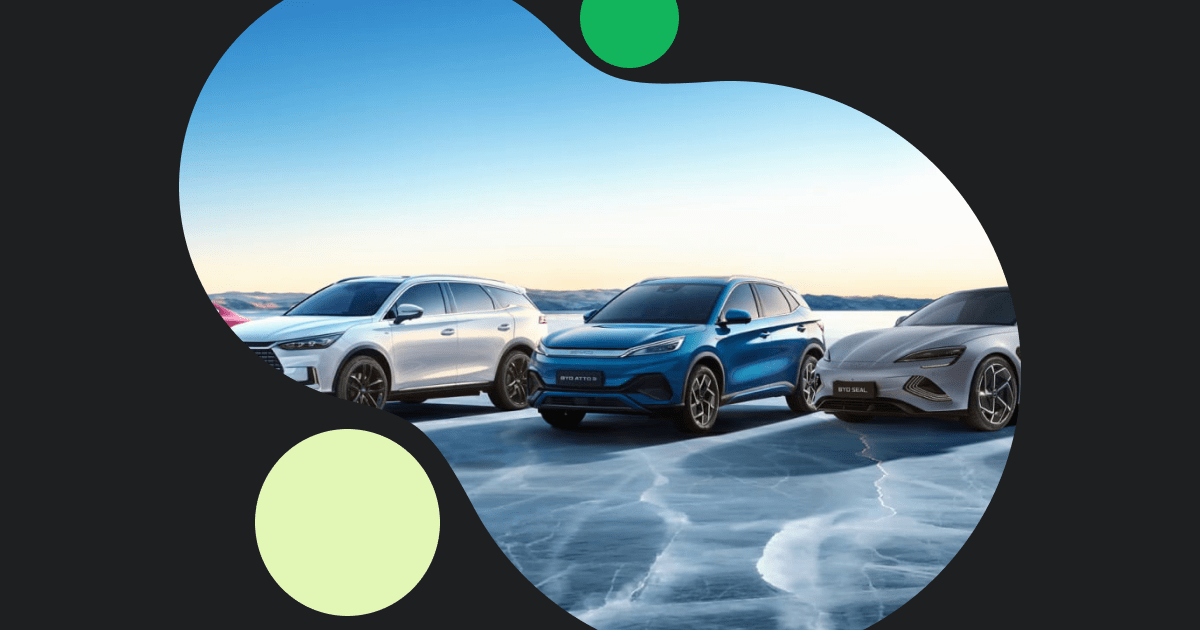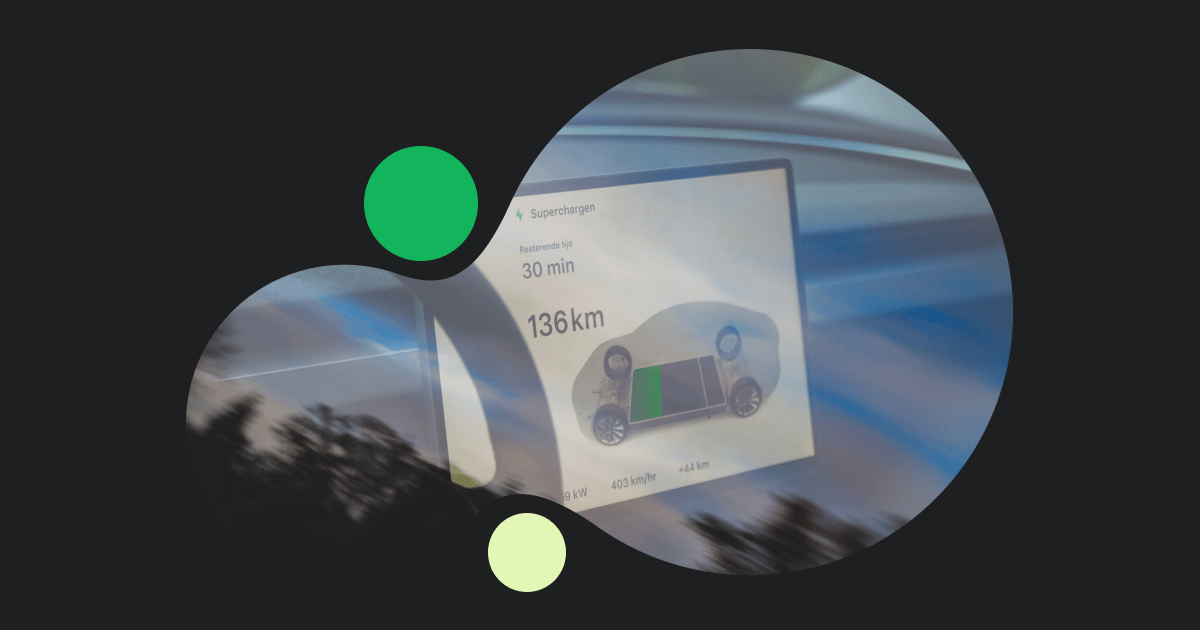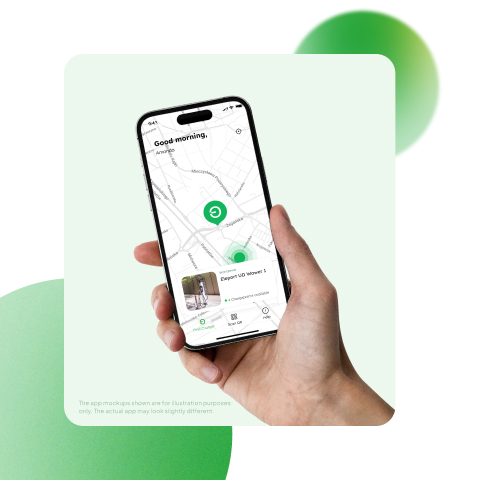If you plan to buy an EV, charging speed matters. Cold weather can slow a session, prices shift by site and power level, and each car sets its own limits.
So, how does EV fast charging work on a frosty morning? Which stop gets you back on the road quicker without wearing out the extra battery? How do you keep costs predictable on a trip?
This article gives you the answers you need about DC fast charging. You will learn how the car and charger agree on power, why charging with direct current saves time, and which habits make a real difference in the day-to-day EV ownership. If you want a quick checklist to ensure a seamless trip before you drive, open our EV charging guide. It covers the essentials for a smooth first charging session.
What Makes Fast Charging Different?
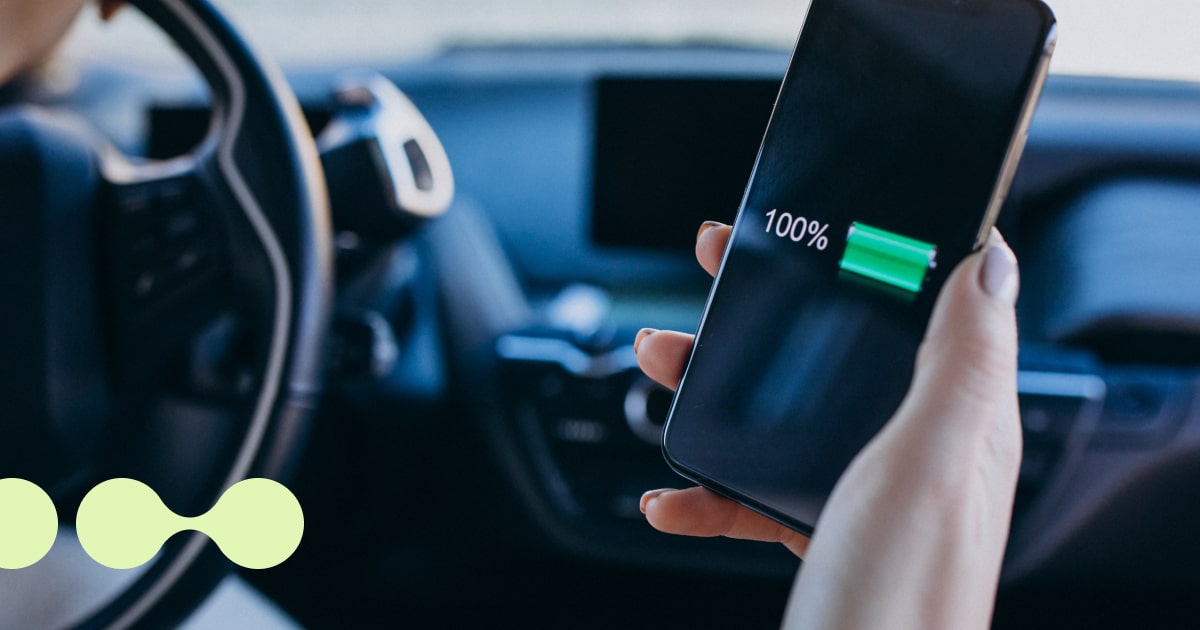
Most home and public chargers use AC power. The current passes through the car’s onboard charger, which converts it into DC voltage for the EV battery. This process is safe and reliable, but not quick. The onboard charger limits the charging speed, typically ranging from 3.6 to 11 kW, depending on the vehicle, and on rare occasions, it can even reach 22 kW. Knowing what your onboard charger is rated at can save you from guesswork in the future.
DC fast charging takes a different route. Instead of relying on the onboard charger inside the car, it sends direct current straight to the battery. The DC charger inside the station handles the conversion. This bypass, which allows for significantly higher power, drastically cuts charging time. Here’s a simple breakdown:
- AC charging: Power goes from the grid → through the car’s onboard charger → into the battery.
- DC fast charging: Power goes from the grid → converted to DC inside the station → directly into the battery.
This direct feed is why fast charging can add hundreds of kilometres of range in under an hour.
If you want a deeper primer on site hardware layout and grid interactions, see Eleport’s explainer on how do EV charging stations work.
How Fast Charging Works in Practice And Why It Slows Down in The End
Think of a fast charge like filling a bottle. You start strong, then ease off near the top to keep everything safe. The same idea applies to charging a battery.
Here are the five steps that happen at the charger:
Step 1. Plug in and authorise

Connect the cable, then start the session in the app or with an RFID card. The car and charger perform a quick handshake, confirm the plug type and software, validate payment, and lock the DC cable so it cannot be removed during the session.
Step 2. Limits are set
The battery management system informs the charger of the maximum power the pack can accept. The cap depends on:
- State of charge: A low battery can accept higher power.
- Temperature: cold or hot cells require gentler power to protect the pack.
- Charger rating: A 150 kW unit can deliver up to 150 kW of power.
- Your EV’s tech: peak intake varies by model and may limit speed even on a faster unit.
Step 3. Ramp to peak power
Direct current flows to the pack at the maximum allowed power. Many cars hold high rates from roughly 10% to 50–60% state of charge. This window adds the most kilometres in the least time and often suits a quick stop before the next leg on a road trip.
Step 4. Taper for safety
As cells near safe voltage limits, the car reduces power to protect longevity. The final stretch takes longer, especially beyond 80%. Most drivers stop around 70–80% and top up later. Some networks end sessions near 80% or add fees for the slow tail to keep bays available.
That start–ramp–taper pattern is the EV’s “charging curve.” Knowing your model’s curve helps predict stop lengths at DC chargers.
Step 5. Finish, payment, and go
The car or charger signals completion, power stops, billing closes, and the connector unlocks. Unplug, stow the cable, and continue the trip.
Want a quick checklist for road trips, start methods, and safe disconnects at public sites? Check Eleport’s guide on how to use EV charging stations.
Key Components at Work When You Fast Charge
Two layers keep a fast-charging session both quick and safe: the intelligent systems inside your car and the industrial-grade electronics inside the charger. Together, they maintain balance between power, heat, and long-term cell health.
- Battery management system (BMS): The BMS is the gatekeeper. It constantly checks temperature, voltage, and cell balance to decide how much power the battery can take. If a reading drifts out of range, it lowers charging speed to protect the pack.
- Thermal management: Liquid cooling or active air keeps cells in the ideal range. This is why, in winter, preheating – often referred to as preconditioning the battery – helps achieve faster charging speeds. Good temperature control preserves battery life and enables higher peaks to last longer.
- High-power cabinets and connectors: Rectifiers and filters within the cabinet convert AC into a smooth DC. Liquid-cooled CCS2 cables carry high current without overheating. Stable output makes DC fast charging consistent on busy sites.
- Software protocols: The car and the station communicate with each other throughout the charging session. They adjust current and voltage many times each second to stay within safe limits and hold charging speed when conditions allow.
Why DC is Faster than AC
The speed comes from removing a bottleneck. Batteries store direct current (DC). The grid delivers alternating current (AC).
With AC, the car must convert AC to DC using its onboard charger. That unit is compact and heat-sensitive. In Europe, it typically peaks at 11 kW or 22 kW. That sets your ceiling at home or when using destination charging.
And that ceiling is there for a reason, of course, given that your regular socket or home grid connection, often up to around 16A as a whole, is far from the connections that are on a fast charging site to deliver such high charging power.
With DC charging, the heavy converter sits in the station cabinet. The charger sends DC straight to the battery, so the car’s onboard unit is no longer the limit. The power per charging plug can reach 100–400 kW, but your actual rate depends on what your vehicle can safely accept. Meanwhile, the charging sites themselves can have connections that draw power in the megawatt range.
This is why with fast charging, you add real range in minutes, not hours. As the battery fills, power tapers to protect the cells. Expect the highest rates between approximately 10% and 80% state of charge. Arrive low, leave before the slow top-off, and your stops stay short.
Charging with Eleport in Europe
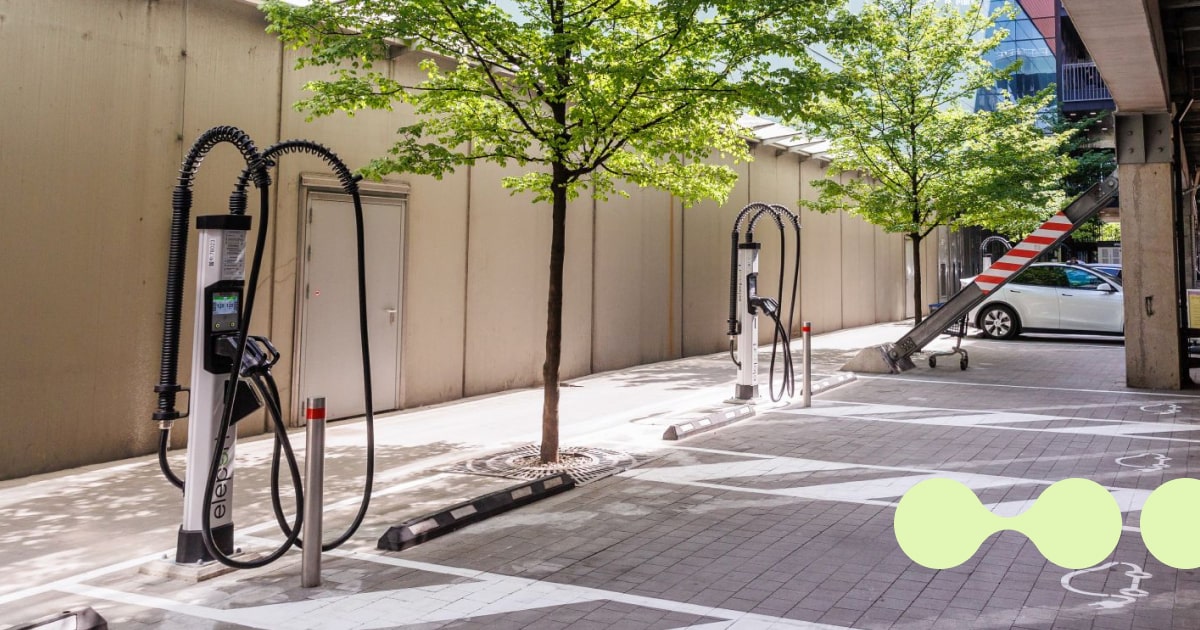
Eleport, Central & Eastern Europe’s leading EV charging network, set a clear goal: to place high-power DC hubs where drivers need them most —on major highway corridors and in busy city centres. The network keeps long trips predictable, delivers real power in short stops, unifies start, payment, and receipts in one cross-border app, and supplies every kilowatt-hour from 100% renewable energy.
What to expect at an Eleport site:
- High-power DC stalls with CCS2 connectors and transparent pricing
- Live availability and full session history in the app
- Locations next to services such as coffee and restrooms
- Roaming that keeps the same account working across borders
Eleport builds the backbone for fast electric travel in Europe. You just need to choose a stop, plug in, take a quick break, and get back on the road.
Impact of DC Fast Charging on Battery Health
The big question: “Does fast charging ruin my battery?” For modern EVs, the answer is “no” in most cases. Your car can handle occasional high-power sessions. The Battery Management System (BMS) controls temperature, voltage, and state of charge to keep the pack within safe limits.
What actually speeds up wear and tear are the usual suspects: excessive heat and letting the battery sit fully charged (or fully empty) for long stretches. We wrote a comprehensive overview to answer the common question Should I Charge My EV to 100%? Here are the things you can easily control to keep your battery healthy:
| When to charge | Recommended action |
| Road trips/urgent need | Use DC Fast Charging. That’s what it’s for! |
| Routine days | Stick to AC (slower) charging. It’s gentler, more affordable, and better suited for daily top-ups. |
| At the charger | Aim for 80%. Trying to hit 100% takes extra time, can cause a line at the charger, and stresses the pack unnecessarily. |
| When idle (vacation) | Store it at about 50-60% charge. |
Cost Considerations
The DC fast charging cost in Europe is set by complex factors: country, charger power, and local rules. Expect most networks to charge per kilowatt-hour (kWh), often with additional session or idle fees to maintain high turnover. As a general rule, you can budget between €0.40 and €0.80 per kWh for trip planning across Central and Eastern European countries..
To understand the market forces behind these prices, sources like Forbes offer strategic coverage on adoption trends. Crucially, Eleport simplifies this complexity by guaranteeing clear, live tariff verification in the app before you plug in, and also displays all prices for each country on its website. This market clarity is your strongest tool for managing and budgeting the fast-charging expense line.
Safety and Standards in Europe
European regulations, such as AFIR, are the muscle behind reliable EV charging. They’re all about demanding quality, accuracy, and accessibility. This means that every fast DC charging station must pass rigorous inspections, utilise the correct connectors and communication protocols, and ensure that your bill is accurate to the penny. For example, according to the new AFIR regulation, all charging points exceeding 50 kW DC in Europe must also support ad-hoc card/contactless payments.
That level of compliance protects both your vehicle and your wallet. Additionally, operators must invest in uptime monitoring and maintain active maintenance crews to ensure optimal performance. The net result is a highly dependable network. This consistency is the secret fuel powering the massive growth of fast DC charging across the continent, making your cross-border trips more predictable and stress-free.
Conclusion
Europe’s EV shift is now about scale. The EU has recently reached 1 million public charging points, and DC chargers made up just over 180,000 of them. That makes long trips easier and street-parked life more practical.
Rules help, too. AFIR requires fast-charging pools at intervals of at least every 60 km along the TEN-T core network, with clear payment and pricing policies in place. No more guessing where to stop.
There’s still a gap to close. The EU had approximately 990,000 public charging points at the end of 2024 (IEA) and needs roughly 3.5 million by 2030. The build is picking up pace, with around 260000 added in 2024 and more ultra-fast hubs coming online.
For drivers, this means reliable DC stops, simpler planning, and less time off the road. Networks like Eleport focus on high-power hubs, CCS2 hardware, and clear euro pricing, which turns policy and numbers into everyday convenience.
FAQs
What is DC fast charging?
DC fast charging delivers direct current to the battery, bypassing the car’s onboard AC converter. That allows much higher power and shorter stops than standard AC posts.
Is DC fast charging bad for the battery?
Occasional use is safe. Modern EVs are designed to handle high-power sessions through sophisticated thermal and battery management systems. Daily exclusive use of DC fast charging may lead to slightly speedier degradation, but not at a level that should worry most drivers.
How fast is DC fast charging?
Depending on the charger and vehicle, DC fast charging can add 100-300 km of range in 15–30 minutes. Some ultra-fast chargers can deliver even more in optimal conditions.
Can I use any DC charger with my EV?
Most European models use the CCS2 connector, which is standard on public networks. Check your car’s plug type and its maximum DC voltage acceptance before embarking on a long trip. Older CHAdeMO vehicles need a matching outlet, and some sites share power between stalls, which can reduce peak charging speed.
Do I need a special app?
Many networks support ad-hoc payments, but using a chargepoint app makes it easier to locate stations, check availability, and track costs.
